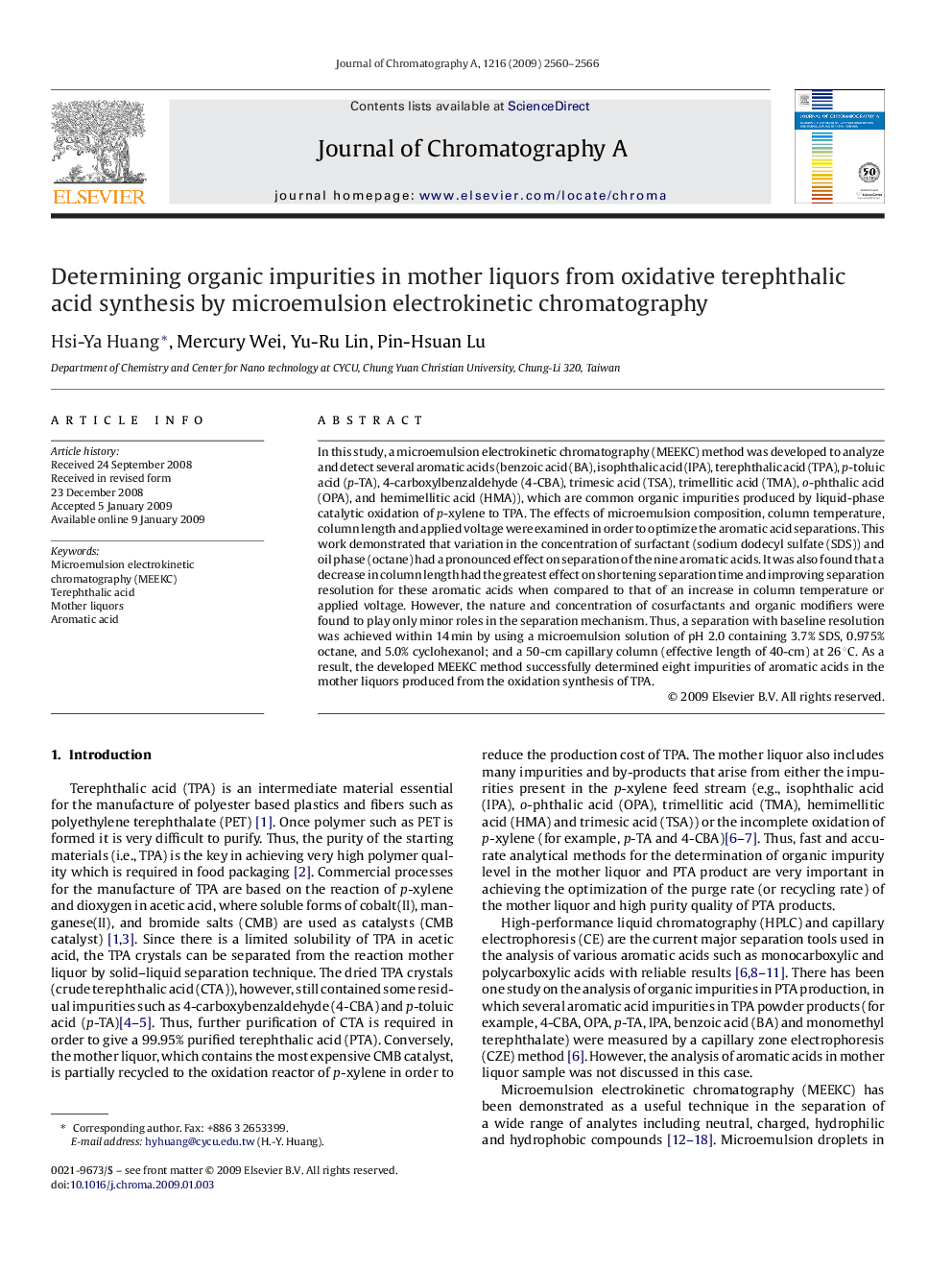| Article ID | Journal | Published Year | Pages | File Type |
|---|---|---|---|---|
| 1206787 | Journal of Chromatography A | 2009 | 7 Pages |
In this study, a microemulsion electrokinetic chromatography (MEEKC) method was developed to analyze and detect several aromatic acids (benzoic acid (BA), isophthalic acid (IPA), terephthalic acid (TPA), p-toluic acid (p-TA), 4-carboxylbenzaldehyde (4-CBA), trimesic acid (TSA), trimellitic acid (TMA), o-phthalic acid (OPA), and hemimellitic acid (HMA)), which are common organic impurities produced by liquid-phase catalytic oxidation of p-xylene to TPA. The effects of microemulsion composition, column temperature, column length and applied voltage were examined in order to optimize the aromatic acid separations. This work demonstrated that variation in the concentration of surfactant (sodium dodecyl sulfate (SDS)) and oil phase (octane) had a pronounced effect on separation of the nine aromatic acids. It was also found that a decrease in column length had the greatest effect on shortening separation time and improving separation resolution for these aromatic acids when compared to that of an increase in column temperature or applied voltage. However, the nature and concentration of cosurfactants and organic modifiers were found to play only minor roles in the separation mechanism. Thus, a separation with baseline resolution was achieved within 14 min by using a microemulsion solution of pH 2.0 containing 3.7% SDS, 0.975% octane, and 5.0% cyclohexanol; and a 50-cm capillary column (effective length of 40-cm) at 26 °C. As a result, the developed MEEKC method successfully determined eight impurities of aromatic acids in the mother liquors produced from the oxidation synthesis of TPA.
